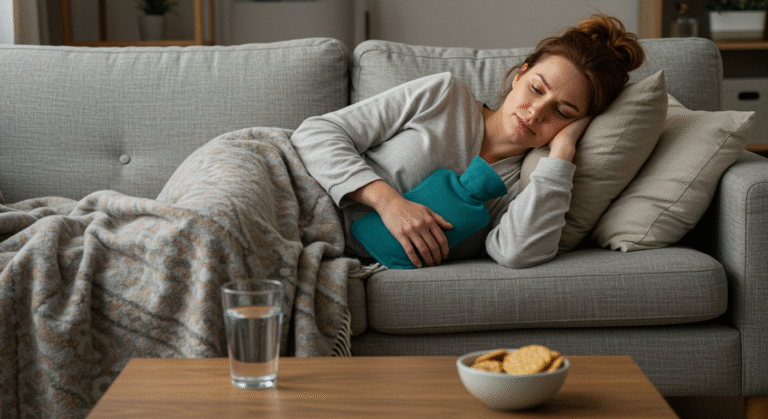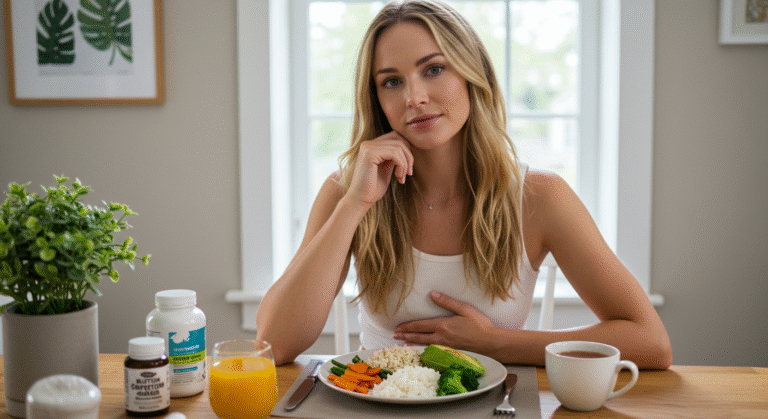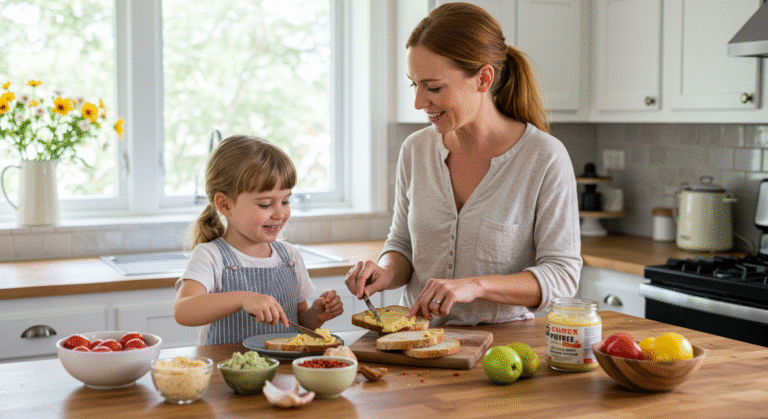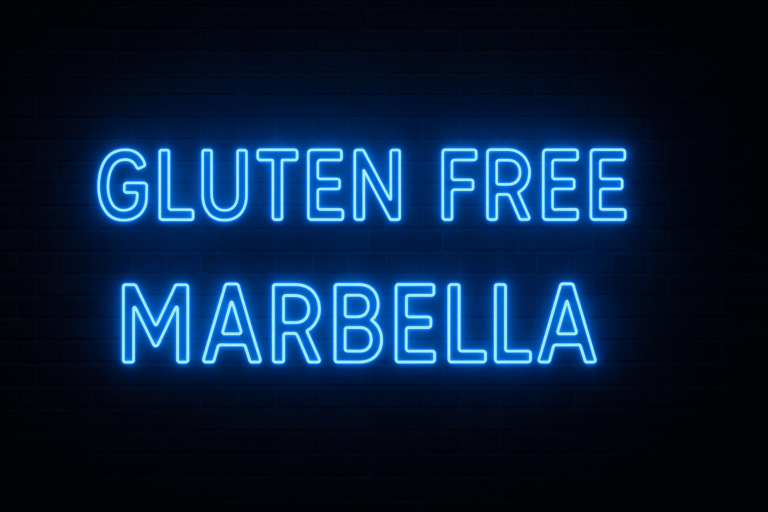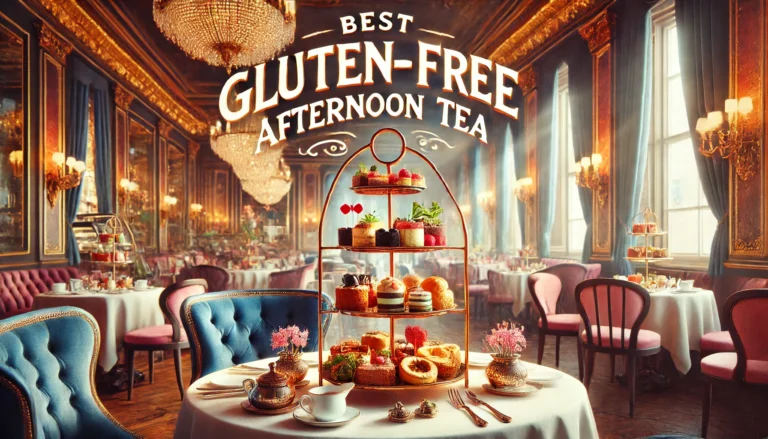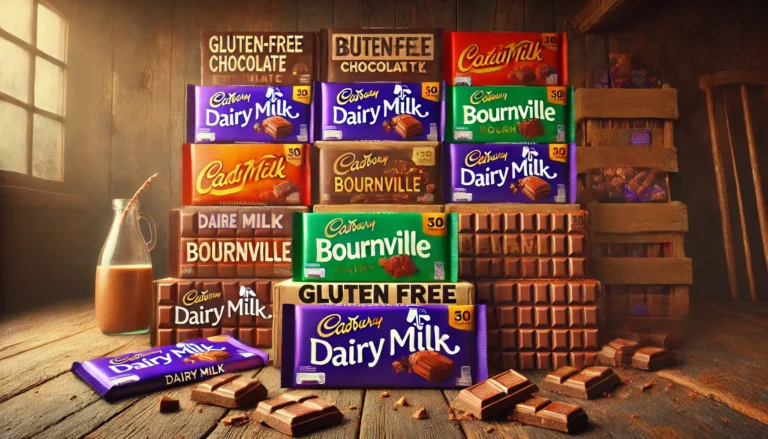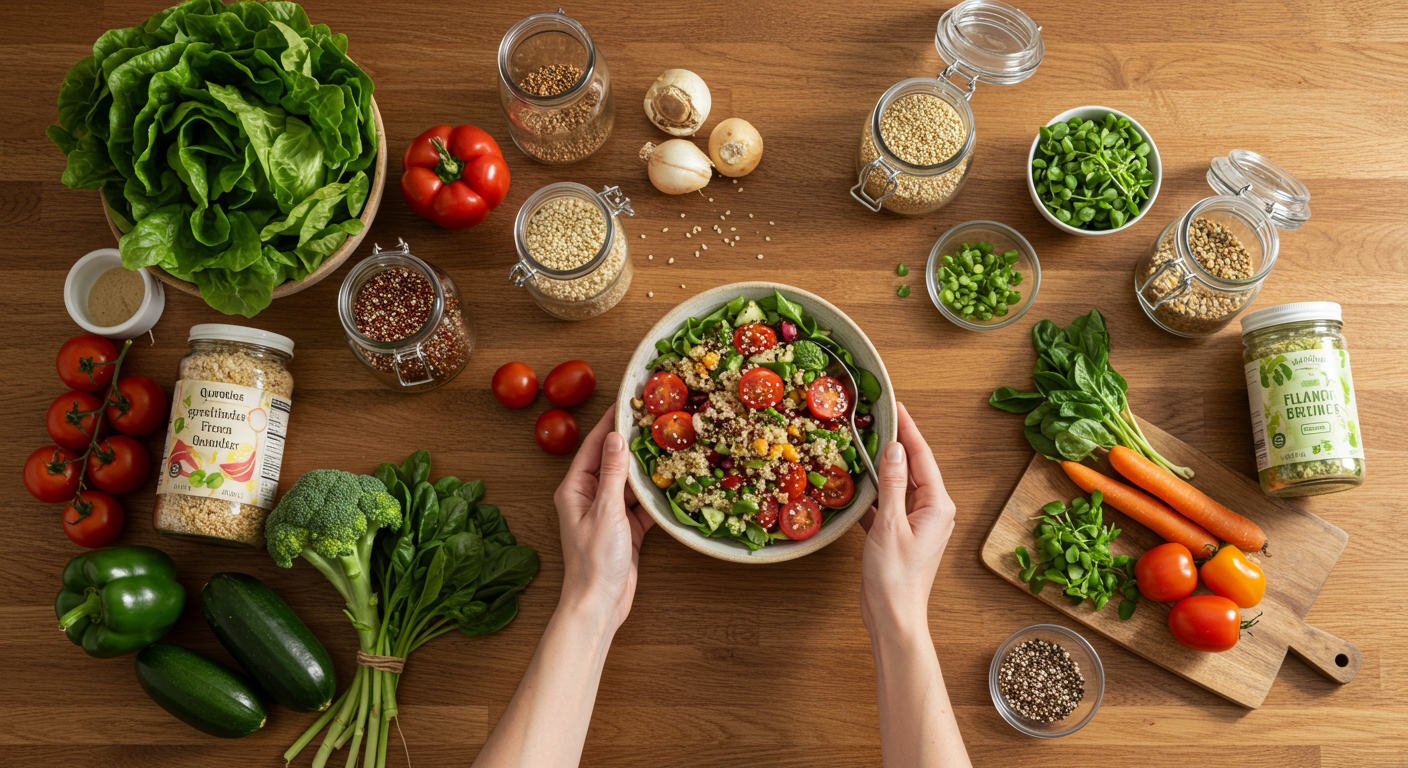
Choosing to be both gluten-free and vegan may sound like a restrictive lifestyle, but it is not only possible — it can be vibrant, nutritious, and even fun.
Whether you are doing it for health, ethical, or medical reasons, this complete crossover guide will walk you through everything you need to know to thrive on a gluten-free vegan diet using simple ingredients and real food.
What Does It Mean To Be Vegan and Gluten-Free?
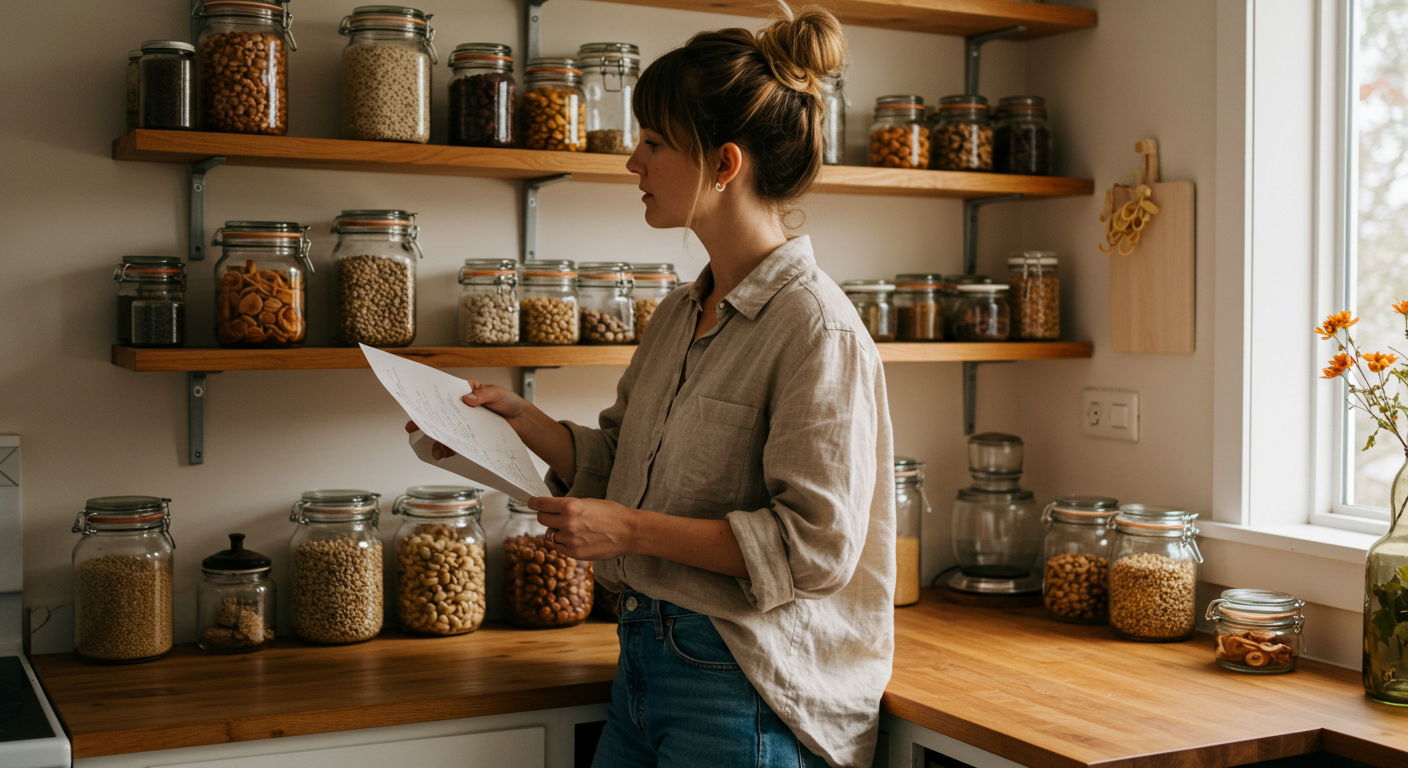
A vegan diet excludes all animal products. That means no meat, dairy, eggs, honey, or any ingredients derived from animals. Veganism is often chosen for ethical reasons, environmental impact, or health benefits.
A gluten-free diet excludes all sources of gluten. Gluten is a protein found in wheat, barley, and rye. Some people avoid gluten due to celiac disease, which is an autoimmune condition. Others may have gluten sensitivity or choose to avoid it for general well-being.
Being gluten-free and vegan means combining both diets. That means you must avoid animal products and any foods containing gluten. For example, you cannot eat eggs (vegan restriction) or bread made with wheat (gluten restriction). But many delicious, natural foods fall into both categories.
Is It Harder To Be Both Vegan and Gluten-Free?
At first glance, following a dual diet may seem overwhelming. You are not just avoiding meat and dairy, but also everyday staples like bread, pasta, and cereal unless they are gluten-free.
However, once you understand what you can eat, it becomes manageable. In fact, many cultures already rely heavily on plant-based, gluten-free staples. Think rice and beans in Latin America or lentil curries in India.
The main challenge is convenience. Many processed vegan foods contain gluten, and many gluten-free products include eggs or dairy. But if you rely more on whole foods and learn to read labels, it becomes much easier.
The good news is that the food industry is catching up. Today, there are many products and meals tailored for people who are both vegan and gluten-free.
Common Foods That Are Both Gluten-Free and Vegan
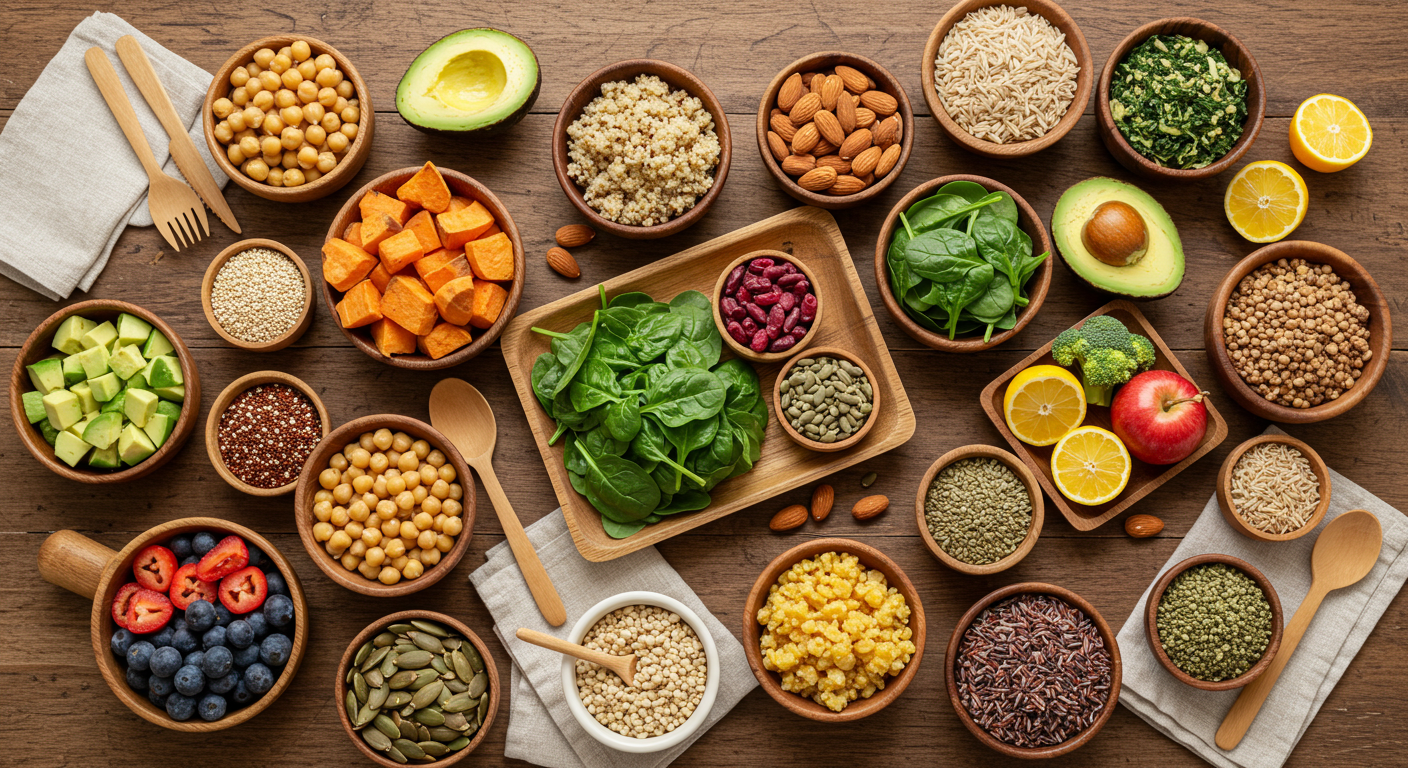
You might be surprised by how many foods fall into both categories. These include:
-
Fresh fruits and vegetables
-
Legumes: beans, lentils, chickpeas, peas
-
Gluten-free grains: rice, quinoa, millet, amaranth, sorghum, buckwheat
-
Nuts and seeds
-
Potatoes and sweet potatoes
-
Plant oils (olive, avocado, coconut)
-
Tofu and tempeh (check labels for gluten)
Most of these foods are naturally free of animal products and gluten. They are also full of fiber, vitamins, and minerals. Many people find that their diet becomes more nutritious once they focus on these whole food staples.
Sneaky Ingredients To Watch Out For
Being both gluten-free and vegan means you have to watch for sneaky ingredients in processed foods. Some foods that look safe may include hidden animal products or gluten.
Watch for gluten in:
-
Soy sauce (use tamari instead)
-
Malt extract or malt vinegar
-
Barley-based drinks
-
Beer (unless labeled gluten-free)
-
Seitan (wheat gluten)
Watch for animal products in:
-
Casein or whey (dairy proteins)
-
Gelatin (made from animal collagen)
-
Carmine (a red dye made from insects)
-
Certain vitamins or omega-3s sourced from fish or sheep
Always read the label. Some products may be labeled vegan but not gluten-free, or vice versa. Even “natural flavors” or “spices” can sometimes contain gluten or animal byproducts. Stick to certified or clearly labeled items when in doubt.
Can You Eat Out on a Gluten-Free Vegan Diet?
Yes, but it takes a bit of preparation. Many restaurants now offer vegan or gluten-free menus, but fewer offer meals that meet both criteria.
Tips for eating out:
-
Call ahead and ask if they can accommodate gluten-free vegan options
-
Choose cuisines that naturally have safe dishes: Indian, Thai, Mexican, Ethiopian, Mediterranean
-
Ask for ingredients to be prepared without sauces or dressings
-
Avoid fried foods unless cooked in a dedicated gluten-free fryer
-
Be polite but clear when explaining your needs
Fast casual chains like Chipotle, Wagamama, or Leon in the UK offer build-your-own bowls that can be made gluten-free and vegan.
When traveling, carry snacks like gluten-free oat bars, roasted chickpeas, or rice cakes to stay safe on the go.
Essential Pantry Staples for a Gluten-Free Vegan
Your pantry is the heart of your kitchen. Stock it with versatile staples that are both gluten-free and plant-based.
Grains and carbs:
-
Brown rice
-
Quinoa
-
Millet
-
Gluten-free oats
-
Buckwheat groats
-
Corn tortillas
-
Rice noodles
Proteins:
-
Lentils
-
Black beans
-
Chickpeas
-
Tofu (check label for gluten-free)
-
Tempeh (some contain barley, read label)
Flours and baking:
-
Almond flour
-
Coconut flour
-
Brown rice flour
-
Flaxseed (for flax eggs)
-
Chia seeds (egg replacement and pudding)
Extras:
-
Nutritional yeast (adds cheesy flavor and B12)
-
Coconut milk
-
Tamari (gluten-free soy sauce)
-
Apple cider vinegar
-
Maple syrup or agave
Building a pantry like this allows you to cook a variety of meals with ease and confidence.
Best Gluten-Free Vegan Product Brands in the UK and US
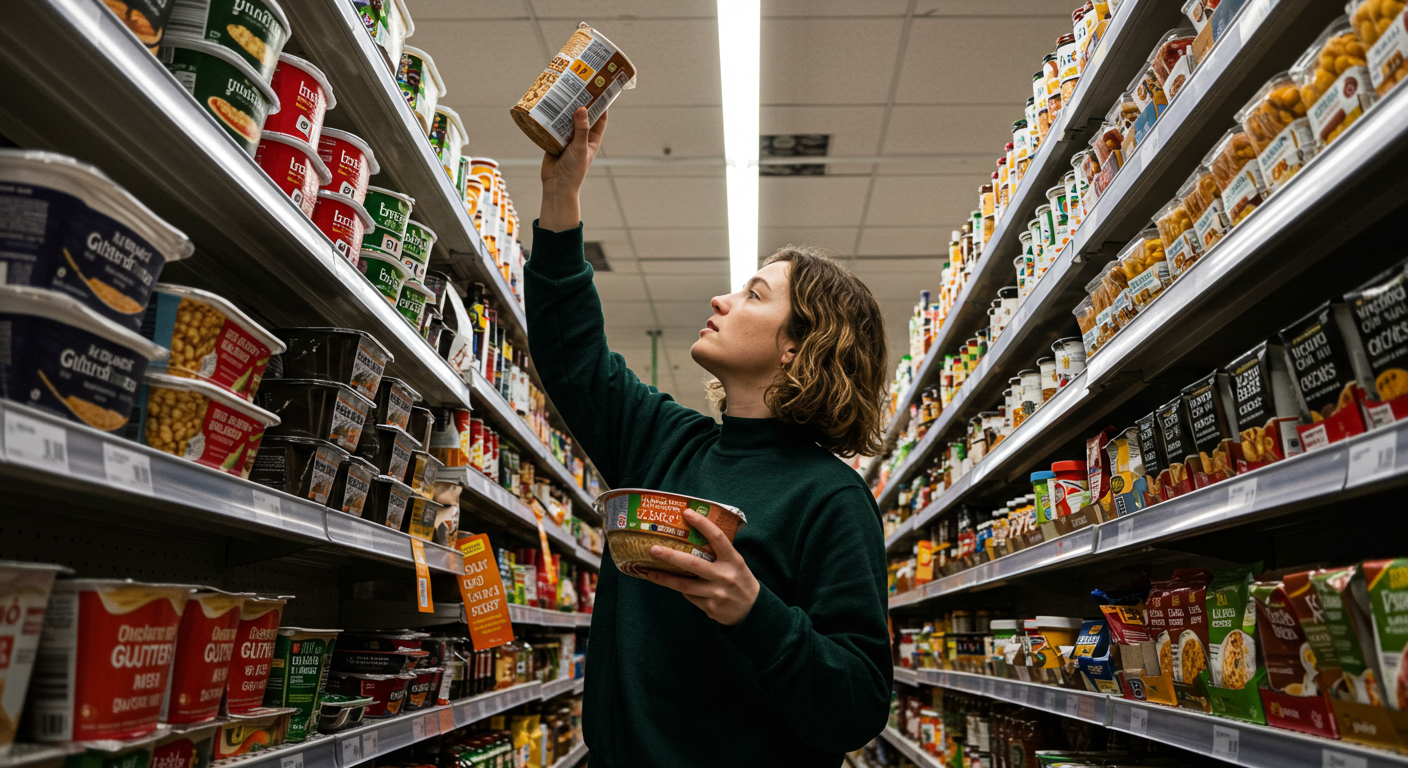
More brands are catering to people with multiple dietary needs. Here are some trusted options.
UK Brands:
-
BFree: gluten-free, vegan breads and wraps
-
Violife: dairy-free cheeses
-
Kallo: rice cakes and stock cubes
-
Oatly: certified gluten-free oat milks (some variants)
-
Genius: gluten-free bread (check label for vegan variants)
US Brands:
-
Miyoko’s: plant-based butter and cheese, some gluten-free
-
Enjoy Life: certified gluten-free, vegan snacks
-
Bob’s Red Mill: flours, oats, baking mixes
-
Follow Your Heart: vegan mayo, cheese
-
Siete: almond flour tortillas, grain-free chips
Major supermarkets like Tesco, Whole Foods, Sainsbury’s, and Trader Joe’s often label their free-from sections clearly. Look for “Certified Gluten-Free” and “Vegan” icons to be safe.
Meal Planning and Sample Day on a Gluten-Free Vegan Diet
Planning ahead is key. A little prep ensures you meet your nutritional needs and enjoy your food.
Here is a sample day:
Breakfast:
Gluten-free oats cooked with almond milk, topped with berries, chia seeds, and a spoon of almond butter
Lunch:
Quinoa salad with roasted sweet potatoes, chickpeas, spinach, and tahini dressing
Snack:
Apple slices with peanut butter or a handful of mixed seeds
Dinner:
Lentil and vegetable curry with brown rice and steamed greens
Dessert:
Coconut yogurt with gluten-free granola and banana slices
This example shows how varied and satisfying your meals can be, with plenty of protein, fiber, and flavor.
Nutritional Considerations: What You Might Miss and How To Replace
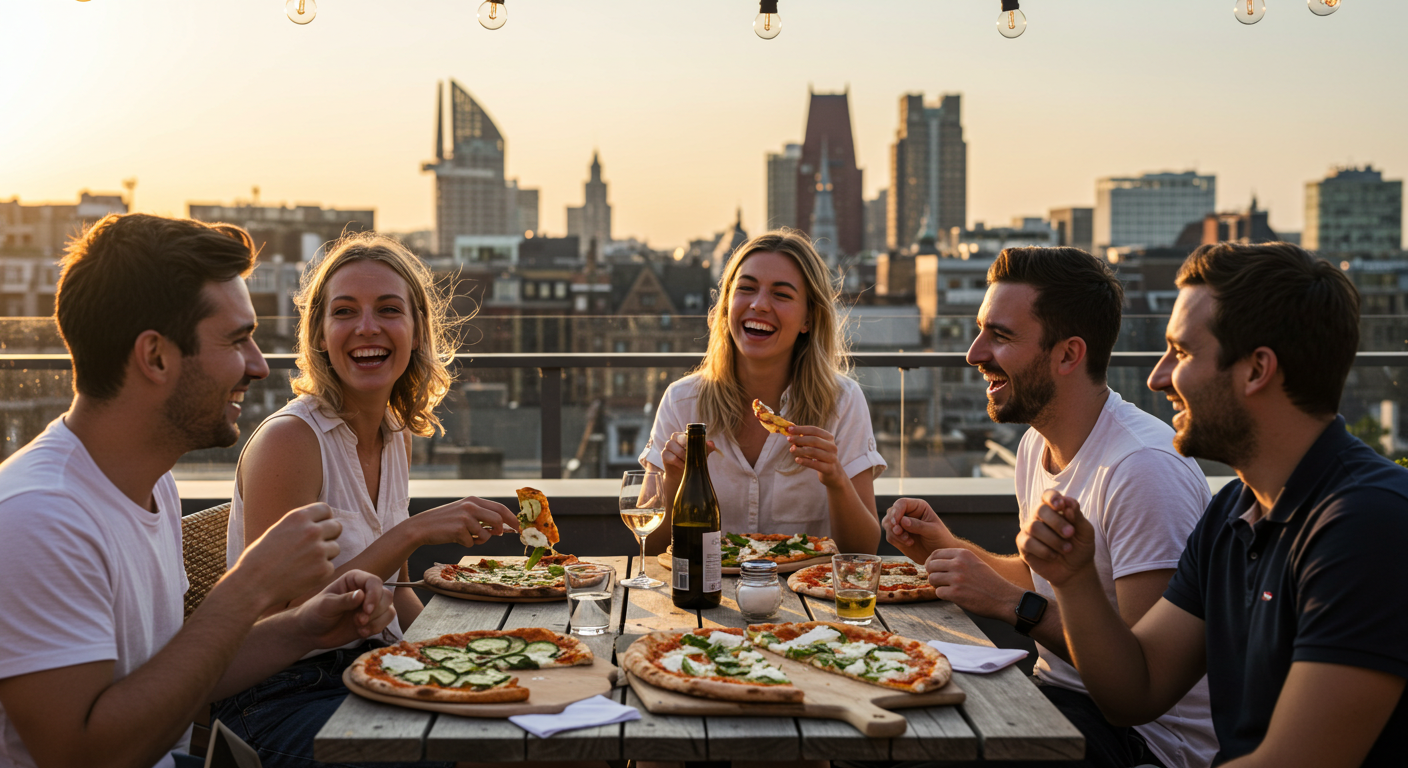
Vegan diets can be rich in nutrients, but cutting out gluten too can add more limitations. Pay attention to the following:
Vitamin B12
Found in animal products, so all vegans should supplement or eat fortified foods.
Iron
Plant-based iron (non-heme) is less easily absorbed. Boost it with vitamin C from fruits like oranges or peppers. Foods like lentils, pumpkin seeds, and spinach are great sources.
Calcium
Look for plant milks and tofu set with calcium sulfate. Greens like bok choy and broccoli also help.
Protein
You can meet your protein needs with lentils, tofu, chickpeas, quinoa, and nuts. Track intake until you get used to meal balance.
Omega-3s
Use ground flaxseeds, chia, hemp seeds, or algae-based supplements to get essential fatty acids.
With a little planning, you can meet all your needs without animal products or gluten.
Final Thoughts: Can You Be Gluten-Free and Vegan Long Term?
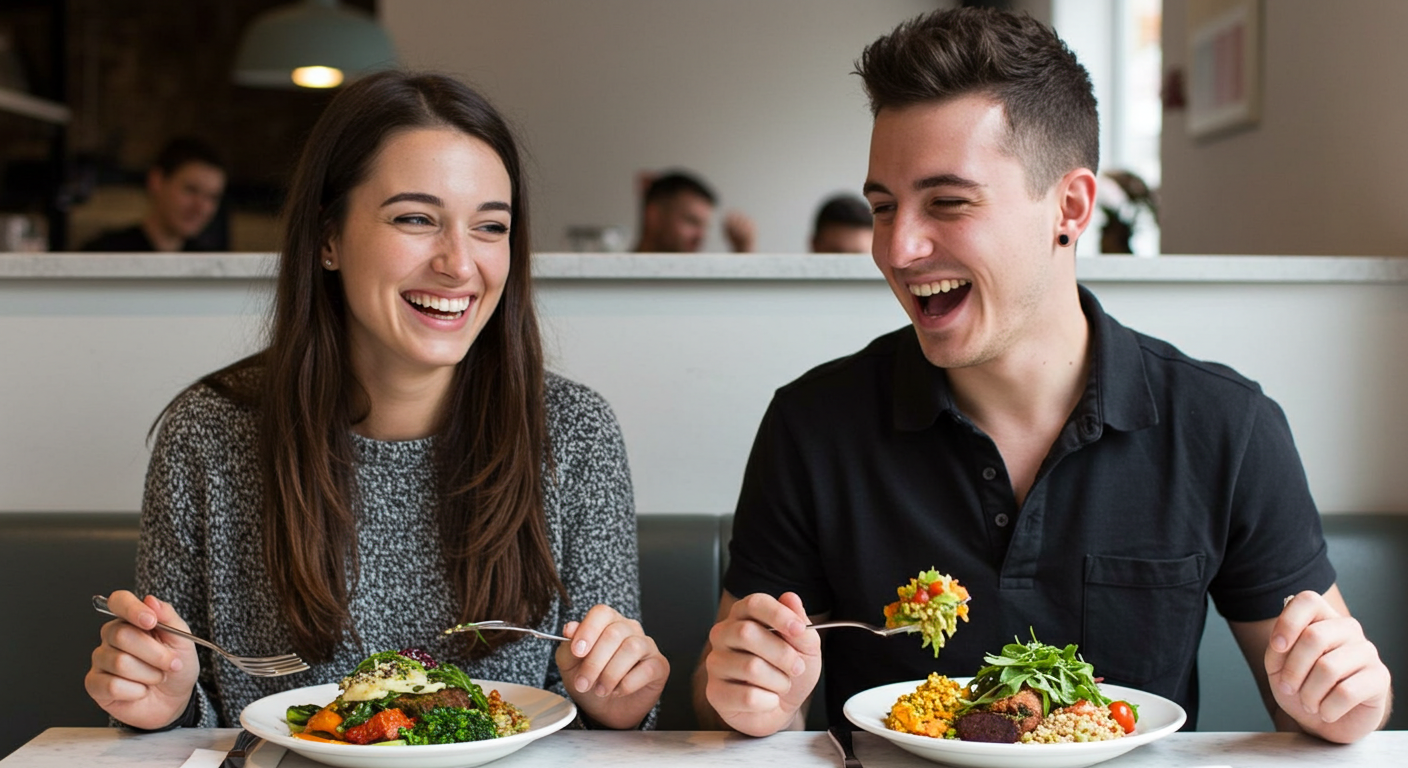
Absolutely. While combining both gluten-free and vegan diets may seem difficult at first, it is completely possible and can be deeply rewarding. Many people follow this lifestyle for health reasons, allergies, ethical beliefs, or simply because it makes them feel better.
The secret is to build your meals around whole foods that are naturally safe. Learn how to read labels, prepare simple recipes at home, and keep a few trusted brands in your kitchen. With time, it becomes second nature.
Support is everywhere. From recipe websites to social media groups, more people are choosing to be gluten-free and vegan than ever before. You are not alone, and you do not have to figure it out all by yourself.
Yes, you can be gluten-free and vegan long term. With awareness, planning, and support, this lifestyle can help you feel healthier, more energized, and confident in your food choices every day.
